Making movies. Enjoying movies. Remembering movies.
THE SCREENING ROOM
Related Articles:
|
By
Rick Mitchell
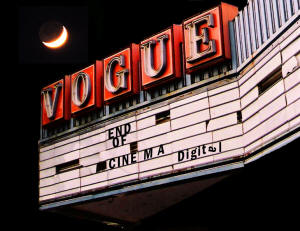
[NOTE: The following
represents exclusively the opinions and observations of this author,
derived from his experiences within the industry and research work on
its history as well as his being a regular, almost weekly filmgoer for
the last 50 years. While he does not presume to be an expert on the
subject, his experiences do lead him to question comments and opinions
expressed by those who do make that claim.]
During the summer of 2005, the press, in various media, has been hanging
crepe for the theatrical end of the motion picture business because of a
precipitous drop off in attendance when compared to previous recent
years. Although the discussion seems to have abated in recent weeks,
it's likely to flare up again in end-of-the-year wrap-ups, especially if
the situation occurs with holiday releases for which there are high
expectations.
Motion picture exhibition is a business unique to the 20th Century, as,
unlike traveling stage shows, etc., at its height film presentations in
a theater were accessible almost anywhere in the United States and most
foreign countries, but it's surprising that it has survived as well as
it has over the last 50 years as its product suppliers have increasingly
put theaters in competition with other content delivery systems for the
same product.
Today production and distribution companies are essentially making
$100,000,000+ direct-to-DVDs and view their theatrical release as
$40-60,000,000 publicity campaigns for the subsequent home video release
two and a half to six months later. And now both 2929 Productions and
Steven Soderbergh and a consortium involving Morgan Freeman have
announced plans to release films theatrically and on DVD the same day,
something incoming Disney CEO Bob Iger is proposing as the business
model the production/distribution areas of the industry should take up!
While the first film Soderbergh plans to release this way does not sound
like it will be a significant hit in either venue and it's highly
unlikely the Freeman company will get access to any high profile films
initially, it's only a matter of time before some junior bean counter in
a distributor-owning conglomerate will conclude that this might be the
only way to break even on some dubiously commercial $100,000,000
project.
 |
|
Bob Iger, CEO, The Walt Disney Company |
There is clearly a disconnect not only between production/distribution
and exhibition, perhaps the biggest negative result of the infamous
Divorce Decree of 1948, but also between those doing the discussion and
those who are actually going, or not going, to movies in theaters. This
discussion has been founded on four major, overlapping fallacies: a
flawed definition of the audience; ignorance of distribution and
exhibition practices and how they've changed over the years; the effect
these changes have had upon the moviegoing experience; and of what the
majority of moviegoers would like, or are willing to pay, to see IN
THEATERS.
The American moviegoing audience has NEVER been a single monolithic
group. It has always been comprised of THREE BASIC GROUPS: essentially
15-24 year olds, 25-50 year olds, and those over 50.
The first group has actually been the most important one for the last
century, the one that, until recently, could be counted upon to go to
the movies on at least a biweekly basis. Prior to the Seventies it was
not uncommon for kids as young as 8 to regularly start going by
themselves to neighborhood theaters in walking distance of their homes
(that's the age at which I started!), but the 15-24 demographic is the
most significant as they have more freedom in choosing what they want to
see; remember William Castle's dictum: "a 12 year old will want to see
anything a 16 year old wants to see but not vice-versa," making the
older demographic in this group the one to target. And, that demograhic
is more likely to be comprised of dating couples for whom going to a
movie is an "economical" date. Also, until student discount prices were
introduced sometime in the Sixties, everyone over 11 had to pay the full
adult admission price. Even after the introduction of television, this
group continued to be steady moviegoers and home video did not cause a
significant drop in their ranks. However, we now have the first
generation growing up with laptops, portable video game and DVD players,
cellphones, etc., which, for the moment, does seem to have caused an
erosion within it. A recent poll reported a dropoff in attendance of
15-24 year old males, the subgroup most likely to go, particularly to
genre movies, on a regular basis, because of these alternate
distractions, which is ominous in its implications, as is current
excitement over iPods that can store and play back video. The screens
may be tiny, but this is a generation used to watching video and/or
playing games on tiny video screens, so it's too soon to tell if this
trend will continue.
 |
It's in the second group, the 25-50 year olds, that most of the erosion
has occurred. Actually, the industry has had TWO BIGGER AUDIENCE
DECLINES OVER THE LAST 85 YEARS and only Edward Jay Epstein on NPR's
"Day-To-Day" has pointed out that the current one is just the latest in
a series of slippages and recoveries in the second decline that's
actually been going on for the last 38 years, caused by significant
competition for the public's free time after periods in which moviegoing
was their predominate or sole entertainment source. The major one: this
is the demographic that is starting families, which complicates
theatrical attendance except at drive-ins, one reason why those venues
were so popular during the Baby Boom. Additionally, they are starting
jobs and advancing in careers that may call for overtime, and the more
successful members often develop other recreational interests that they
prefer to regular moviegoing.
There is, and has always been, a sub-group in this age range, singles
and childless couples, who generally continued regular moviegoing,
especially, the less affluent ones, and they extend into the third, over
50, group which also includes parents whose kids are old enough to no
longer need parental supervision and who gradually returned to
moviegoing and other activities outside the home, though not as
frequently as the first group.
Television's role in this erosion has been distorted; it did not become
a factor in the 25-50 year old group's decline as soon as some
historians have claimed. (Remember, there weren't that many stations or
sets in 1947, but the ones that did exist were in New York, Los Angeles,
and Chicago, and because people in the upper levels of the entertainment
industry were in a better position to buy sets than the average person,
it was a factor in their everyday lives sooner than in that of the
general public. Their discussions of TV's effect on their lives and
careers in print and on radio have been the foundation of this
historical error.) TV did become an increasing alternative to going out
to the movies in the Fifties, especially after 1955, when the major
studios got seriously into TV production and brought a higher level of
production value to the dramatic shows being done at the time. The
release to TV of post-1948 features in 1960 and their presentation on
the networks in prime time eliminated the necessity of seeing a film in
a theater for those willing to wait two years for its video release
unless it was a racy adult film like "Lolita" (1962) or "Who's Afraid Of
Virginia Woolf?" (1966), which wasn't likely to make it to the tube, or
if so, in a highly emasculated form. Cable and home video would later
take care of this reason to see such films in a theater.
 |
And since the Sixties there has also been a significant but rarely
acknowledged difference along class lines in all of these audience
groups from those of college attendance age upward, between those whose
tastes run to arthouse films and the larger audience for mainstream
entertainment films. Unfortunately, the focus of this summer's
discussion has been almost exclusively on the former, overlooking the
fact that this is still a smaller portion of the audience than that for
mainstream entertainment films. Theater chains like AMC, Mann, Pacific,
and Regal are being more negatively impacted than Laemmle or Landmark
and THEIR situation is the primary focus of this commentary.
The second fallacy stems from the attitude that distribution and
exhibition have always operated the way they've been doing for the last
25 years, notably opening films in thousands of theaters on the same
day. This lack of historical perspective is not unexpected given the
fact that there has been no serious study of the interrelationship
between distribution and exhibition equivalent to those devoted to
production, especially over the last 35 years. (A couple of friends of
mine with backgrounds in distribution going back over 50 years continue
to resist my inducements for them to do such a work.)
In fact, beginning with the practice of building movie palaces in major
cities that started about 90 years ago, first run meant a slow,
staggered rollout of one to two week engagements in approximately 75-100
cities that usually took six to eight weeks before the films were made
available to neighborhood houses. Various companies began experimenting
with wider concurrent release patterns starting in 1962 and the practice
really took off in the late Seventies. (For the record, United Artists
had experimented with this in the New York area in the summer of 1956,
and again, along with 20th Century-Fox, in 1961, though some sources
credit David O. Selznick as pioneering it in select cities with "Duel In
The Sun" in 1947.) The previous release pattern would have made the
recent emphasis on opening weekend boxoffice figures impossible to
calculate, of course.
And having films incur a boxoffice dropoff of 50% or greater in their
second week of release was not unusual in the past. A look at VARIETY
from between 1945 to the point in the mid Seventies when it stopped
publishing boxoffice reports from theaters in about 50 major cities
across the country would show that, except for roadshows and special
limited releases and aside from the occasional "sleeper," THERE WAS
ALWAYS A CONSIDERABLE DROP-OFF WHEN A FILM WAS BOOKED FOR MORE THAN ONE
WEEK! (I'd have to go back and do a more in-depth study to get an
average of the percentage, but I'd guess it was usually 40-50 percent.)
Since most people who really want to see a particular film have always
done so the first weekend or within the first week that it plays in
their area, such a dropoff is to be expected.
Nor was first run success a key gauge of a film's popularity in times
past. A, if not, THE major factor in the success of motion picture
exhibition in the past has been that it was the cheapest form of
non-athletic entertainment outside the home available to the majority of
people in the 20th Century. According to such sources as WEEKLY VARIETY,
exhibitor publications like BOXOFFICE and MOTION PICTURE HERALD,
personal observation over the last half century, and conversations with
others who grew up in other parts of the United States, prior to about
1980 MORE PEOPLE DID THEIR REGULAR MOVIEGOING AT LOWER PRICED SUBSEQUENT
RUN THEATERS SUCH AS NEIGHBORHOOD HOUSES, CHEAP GRIND HOUSES, AND
DRIVE-INS IN THE FIFTIES AND SIXTIES, THAN IN FIRST RUN VENUES. "Subrun"
has been overlooked in studies based on BOXOFFICE INCOME because, unlike
first run, where the distributor can get 90-50 percent of the first week
boxoffice, with percentage reductions for each subsequent week, initial
subrun engagements were usually for a guarantee vs. 50 percent of
boxoffice, working down to a flat rental, which in the Fifties and
Sixties could be as low as $5 for a one-to-four day run; in the early
Seventies, $50 was the minimum rental in the L.A. area. Although
"subrun" exhibitors were supposed to report their total boxoffice to the
distributors, one of the ongoing fights between distributors and
exhibitors has been the accuracy with which they did so, if at all, thus
making distribution net income a somewhat dubious measure of a film's
actual popularity. But it does explain how certain genre films of the
Fifties could become cultural icons without appearing on any lists of
"Top Grossing Films."
In retrospect, it may have been a major mistake to essentially eliminate
"subrun" by the trend to wide multiple theater openings, given
contemporary audience complaints about theater prices and "value for
cost." Personal observation in Hollywood in the Seventies and Eighties
suggests that just as many people waited a month or so to see films
second run as went to see them first run on the Boulevard. They were
also more likely to wait to see non-genre films that had opened
exclusively in Westwood on their subsequent wide release in smaller,
cheaper local houses. Indeed, many second run houses in the area, like
the infamous World on Hollywood Blvd., closed not because they were
losing business, but because the property was owned by someone other
than the exhibitor or theater chain who decided they wanted to put it to
other use.
The majority in this audience was not the kind of upscale trendoids that
have made venues like L.A.'s Arclight, Bridge, or Grove so popular for
the moment, but people between student and senior prices with limited
incomes, who did have TV sets, but still wanted to get out of the house
on occasion and the best recreation they could afford was either a movie
or a bar, or both. Though "bargain" houses still exist in outlying areas
(there is only one in the entire area considered the L.A. Westside, the
Vine on Hollywood Blvd.), as the general elimination of "subrun" began
before home video became a significant factor, it's not known the degree
to which audiences who preferred to see films in accessible lower priced
theaters would continue to do so, but it might be worth exploring, in
the smaller auditoriums of megaplexes, for example.
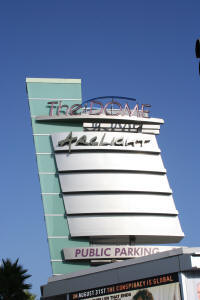 |
And contrary to the industry's positive hype for multi and megaplexes,
they have also been a major reason for attendance dropoff of over 25s in
recent years. Exhibition boosters claim that it's the COMMUNAL
EXPERIENCE that draws audiences to the theater. Most recently director
M. Night Shaymalan voiced this at an exhibitor convention when
expressing his open opposition to the above mentioned Soderbergh plan.
While this "social aspect" is still true to a degree, particularly for
those of senior high school and college age, as far as the overall
"adult" audience is concerned, it seems to apply only for comedies.
When the older group attends at all, it is most likely to be on a
Saturday evening, after a hectic day of either overtime work or dealing
with their kids or both. Where before multiplexing, they could attend a
single screen venue with fellow adults there for the particular, usually
mature themed, film, now they have to deal with parking hassles and
lines of often rowdy young people headed for films geared toward that
age group at both the ticket booth and the concession stand, as well as
obnoxious patrons in the auditorium itself. There have long been
complaints and comments about people talking and making other
distracting noises during a film, even before cell phones. They are also
pickier about the quality of the presentation with too loud sound and
too dim and/or out of focus projection being major complaints made
especially by those affluent ones who have high end home theater
systems.
In addition to that, based on what I've overheard from the general
public, as well as the letters on the subject from its readers that the
L.A. TIMES has chosen to print, it's also the INCREASING HIGH COST OF
ATTENDANCE FOR PRODUCT THEY DON'T FEEL IS WORTH IT WHEN THEY HAVE
CHEAPER OPTIONS FOR VIEWING IF THEY CHOOSE TO ULTIMATELY DO SO.
This is the most controversial aspect of the discussion. ALL OF THE
COMPLAINTS I'VE HEARD OR READ ABOUT THE QUALITY OF RECENT PRODUCT HAVE
COME FROM CRITICS AND PEOPLE OVER 25, especially from the arthouse
crowd, and are essentially the same complaints they've been making for
the last thirty years, ever since the success of "Jaws" (1975) and "Star
Wars" (1977) shifted Hollywood toward the so-called blockbuster/tentpole
mentality. Yet, the general mainstream public, even the over-25 set, HAS
NEVER ENTHUSIASTICALLY EMBRACED ARTHOUSE FILMS AND THERE IS NO EVIDENCE
THAT THEY WILL DO SO IN THE FUTURE.
Ever since it was embraced by the middle class 90 years ago, motion
pictures, both as an entertainment medium and an art form, have suffered
from "the snob factor," the attitude that they were inferior to the
older traditional literary/theatrical art forms. Even after the East
Coast culture mavens were forced to accept film as a serious art form
because of its enthusiastic embrace by college students of the time,
where American films were concerned, respect was still only extended to
those films most like novels and plays, with a continued disdain for the
type of fare uniquely suited to the film medium and popular with "the
great unwashed masses."
That the studio executives most responsible for deciding what pictures
get made have increasingly been of this mindset has not helped the
situation. It's often overlooked that certain key production decision
makers of the so-called "Golden Age," Harry Cohn, Walt Disney, Jack
Warner, Darryl Zanuck (billed alphabetically) and even Louis B. Mayer,
all essentially came out of that low/middle class American market toward
which their films were aimed. Also in those days, the studios could get
some indication of the potential response of the NATIONAL audience to
new films by previewing them in those parts of Southern California
inhabited by transplants from the Midwest. And before the Divorce
Decree, the vertically integrated companies could get valid feedback on
not only their own product, but that of other companies whose films
played on their screens as well.
This became another unacknowledged negative of the Divorce Decree as the
relationship between distribution and exhibition became more
contentious, and attrition in studio executive ranks resulted in
replacements from the insular world of the generic "Hollywood" who had
no real knowledge or experience of audiences outside those of the L.A.
Westside and its New York equivalent. While giving lip service to the
increasingly important teenage/young adult market with cheap
rock-and-roll and genre films, they continued to try to recover the
"adult" audience with racy fare. 1965, the year of "The Sound Of Music,"
and in the south and Midwest, "Shenandoah," was the penultimate year of
viability for that mainstream middle class ADULT audience, the impact of
its declining interest signaled by the well documented failures of
"Doctor Dolittle" (1967) and "Star!" (1968). The theatrical audience
that was left was fragmented between the primarily entertainment seeking
teenagers and non-collegiate young adults which had been successfully
and respectfully nurtured by American International and its copycats,
and the collegiate arthouse crowd, as noted above. Given that the
production executives of the time were all college graduates, mostly
from east coast liberal arts institutions that were traditionally
anti-film in general and anti-Hollywood in particular, they naturally
chose to concentrate on the latter group, with "Easy Rider" aside, films
that were dismissed by the target audience and had no appeal to the
other segments. Much to the shock of these executives, it was more
traditional fare like "Airport" (1970), "What's Up, Doc?" and "The
Poseidon Adventure" (both 1972), and "The Sting" (1973), as well as such
fare given a "hip" spin like "The French Connection" and "A Clockwork
Orange" (both 1971), "The Godfather" (1972), and "The Exorcist" (1973),
which brought audiences back into theaters at that time, including a
brief renaissance of attendance by the "oldsters."
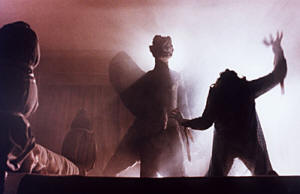 |
(Making Peter Biskin's "Easy Riders, Raging Bulls" the "official"
history of the late Sixties and Seventies has been a source of a lot of
the misunderstanding about this period because of its limited
pro-arthouse point of view and significant historical, social, and
cultural omissions. Biskin, apparently deliberately, ignores the fact
that Steven Spielberg and George Lucas, whom he specifically blames for
ending this period of "open creativity in Hollywood," were successful
because they were making films that more people wanted to see than those
of HIS preferred subjects. He also completely ignores the impact such
genres as blaxploitation and martial arts had on the mainstream
audiences of those times, as well as the continuing popularity and
influence of horror films both before and after "The Exorcist," among
other flaws in his book.)
The combination of the success of "Jaws" and "Star Wars," the absorption
of film companies into conglomerates, and the move into executive
offices of people with even less connection to what was left of the
REGULAR MAINSTREAM MOVIEGOING AUDIENCE would lead to their being
patronized with the current production climate of sequels or remakes of
films or feature versions of old TV shows from when these executives
were young, but which are often obscure to today's teens. Disney
executive Nina Jacobson's admission to the L.A. TIMES' Patrick Goldstein
that she was intentionally remaking the films she enjoyed as a little
girl, such as "Herbie: Fully Loaded" (2005), is not surprising, but is
shocking in the apparently serious openness with which she made it.
(The only really valid study of the moviegoing audience that I'm aware
of is "American Audiences On Movies And Moviegoing" by UCLA Professor
Tom Stempel [University Press of Kentucky, 2001]. Prof. Stempel gave
questionnaires to his students as well as sending them to parties of
different ages around the country [including this author], but unlike
the academics who'd done previous audience studies, like the infamous
"Our Movie Made Children" of 1933, which was a factor in the 1934
enforcement of the Production Code, Prof. Stempel had the background in
film history and the filmgoing experience to evaluate the results with
acceptable validity.
Another rarely tapped source of useful historical perspectives on
exhibition and audiences if one is moved to research them are the "The
Exhibitor Has His Say" and "What The Picture Did For Me" columns in back
issues of BOXOFFICE and MOTION PICTURE HERALD, respectively. The
responses in these columns are primarily from independent exhibitors in
the Midwest and South and often offer a different point-of-view on their
audiences, their tastes, and their reactions to specific films than can
be found in most film histories, which are almost always written from a
New York/Los Angeles viewpoint.)
The suggestions that Hollywood needs to make more films for adults
ignores the fact that the majority of failures over the last forty years
have been in the area of DRAMATIC films aimed at adults, who felt most
of them weren't worth the time, effort, and money to go out to see for
the reasons cited above, as well as the increasing availability of
similar fare in TV and later cable movies. In fact, in 1982 Warner Bros.
pulled from release a film entitled "Independence Day," about a battered
wife triumphing over her abusive husband not interstellar aliens, after
learning that its trailers were regularly being hooted with derisive
catcalls of "TV movie!" And the failure of "The Insider" (1998) was
partially attributed to its similarity to a number of whistle blower
expose cable movies that HBO had recently done.
With video now so ingrained in most adult lifestyles, the industry is
not going to get the mainstream adult audience back on a regular enough
basis for films aimed at them to support exhibition. Most supposedly
serious films aimed at this segment involve verbal explication, which
makes them indistinguishable from today's censorship free cable movies
and play just as well, if not better, on the tube than on the big
theater screen. With all due respect, do critics, writers and actors
seriously believe that significant numbers of adults outside of the L.A.
Westside and its equivalent in other major cities are going to put up
with the above described negatives to theatergoing JUST TO HEAR ACTORS
TALK?
(Before they're cited as exceptions to the above statements, it should
be remembered that "My Big Fat Greek Wedding" was a comedy, and "The
Passion Of The Christ" was fueled by a church based marketing campaign
that implied attendance was as much a duty for the faithful as
attendance at regular church services, the extreme example of a
technique that in years past had fueled attendance for "uplifting" films
like "One Foot In Heaven" [1941] and "Going My Way" [1944] as well as
the silent and sound versions of "Ben-Hur" and "King Of Kings" and "The
Sign Of The Cross" [1932] and the 1956 version of "The Ten
Commandments.")
 |
Nor is an increase in more arthouse type films likely to help. In the
last 15 years, even publications like VARIETY and BOXOFFICE have been
having print orgasms over the esoteric offerings at Sundance and similar
festivals, even though a few years ago the L.A. TIMES, and a year later
VARIETY, admitted that most of the winners at these events that were
picked up for theatrical release generally fail to attract audiences in
limited arthouse release, with the few given mainstream release having
even more disastrous results. That these are usually SMALL, INTIMATE
films may have been an asset in past years when they were usually shown
in small, intimate theaters, but not when a cheaper, more convenient
equivalent is available via home video. Also, the subject matter or
approach that attracts the arthouse audience is generally a turnoff to
people just seeking an evening's entertainment, a point underscored to
me by the complaints of acquaintances who frequently attend free advance
word-of-mouth screenings of such films and are usually disappointed by
the results and can't understand the critical acclaim the films
subsequently get.
One recent example of this involves the project "Murderball," whose
failure to attract an audience has been lamented by a number of
commentators in spite of its numerous festival prizes and
across-the-board critical raves. It should be obvious to anyone with any
cognizance of the mainstream audience that a documentary about
paraplegics in wheelchairs playing some rough sport would be the longest
of long shots in attracting a mainstream audience while the title sends
a mixed but negatively skewed message to the currently anti-violence
leaning arthouse crowd. Perhaps if the film HAD been the violent action
thriller that the title implies, it might have been successful.
Similarly, "Hustle And Flow," a major critical favorite and prizewinner
at this year's Sundance Festival, was eclipsed commercially by the
surprise sleeper "March Of The Penguins." Perhaps if a film about a pimp
who wants to succeed as a rapper had been done as a comedy vehicle for
the next Eddie Murphy/Chris Rock wannabe, it may have been successful.
Instead, as a Scorcese-eque over-the-top drama, it apparently didn't
even attract the black niche audience.
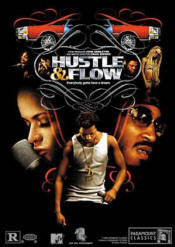 |
Of course blockbuster/tentpole films have been the most notable victims
of the current slump, but again there is an historical perspective
that's being overlooked, that every genre tried by the industry over the
last 55 years has had a rise and fall cycle that's actually predictable
when they're seriously studied. A sleeper success inspires some
follow-ups whose success inspires a further spate of follow-ups until
the market becomes satiated and the audiences turn to a new genre. This
pattern began with "Destination Moon" and "Rocketship X-M" in 1950 and
the science-fiction and horror genres have gone through the cycle with
the most frequency, but over the last half century Hollywood has tried
such genres as juvenile delinquent films, Depression era gangsters,
beach party and similar "teenagers just having fun" comedies, biker
gangs, blaxploitation, and "chop socky" films, all of which went through
the cycle of initial popularity followed by often swift decline.
Action, which encompassed many of these genres as well as westerns and
war films, became its own genre as a series of action sequences
connected by the thinnest threads of plot, in the wake of the success of
the James Bond films in the Sixties, and would take off in a series of
increasingly expensive films in the Eighties. Such films were rarely
popular with critics, being founded on "deeds, not words," who have
gleefully written them off twice over the last 20 years with the
failures of several high profile and expensive films at the time, only
to see the genre rebound with films that offered a fresh take on the
genre, "Die Hard" in 1988 and "Speed" in 1994.
The current genre film dropoff is due to the patronizing attitude of
studio decision makers, who really don't like such films but greenlight
them only because, despite their costs, when they're successful it looks
good to the parent company. Unfortunately they don't understand such
films and their attraction to their target audience and over the last
couple of decades in particular continually make the wrong decisions in
their choice of projects or their development, the most important of
which is literally cloning the last big success. In the
Fifties-thru-Seventies, the companies specializing in genre films,
especially American International, would ascertain the elements which
worked to make a particular film successful and rework those into a new
context, even going so far as to combine genres like bikers or
blaxploitation with horror as in "Werewolves On Wheels" (1971) or
"Blacula" (1972). (Source: not only speeches and the autobiography of
Samuel Z. Arkoff but personal conversation with former AIP production
head Norman T. Herman.)
Of course, there was still a limit to the degree to which this could be
done and after a while what might be termed the "familiarity breeds
indifference" syndrome would set in. Today, the cloning of mainstream
movies brings this syndrome on sooner, especially with trailers and TV
spots which, in associating the new film with a previous one, too often
imply that it has nothing new to offer. "Stealth" probably suffered from
this as well as the recent CGI/videogame approach to action films.
In the good ole photochemical days, teenage boys especially would go
back to see films with particularly amazing visual effects shots just to
see if they could figure out how they were done. Today, the publicity
given CGI has resulted in such shots being offhandedly dismissed even in
the rare instances when they're not CGI (and it's amazing how many
effects people ignore the obviousness of most such shots.) Also, the
cartoon/videogame approach to many such shots actually mitigates against
the "suspension of disbelief" that is necessary for real emotional
involvement with the film. Spielberg's "War Of The Worlds" works because
not only does every effects shot in the film look as if it could
plausibly be shot with a camera, but are often staged with the proper
magician's trick of casually incorporating the effect in what starts out
as a shot without apparent effects.
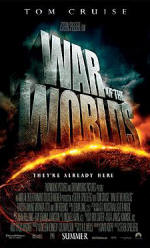 |
And current instances of "familiarity breeding indifference" is not just
limited to genre films. For instance, in the wake of the success of
"Legally Blonde" (2001) and a couple of other economically made "chick
flicks" about the career starting and romantic misadventures of some
twentysomething females, various companies flooded the market with a
rash of similar films whose plot direction could be predicted from the
trailers and TV spots, the most recent examples of which got decreasing
audience responses.
This is probably why, despite the hype and critical raves, "Cinderella
Man" failed to attract an "adult" audience, even with its well
publicized rebate. You know how it's going to end, with
"Rocky"/"Seabiscuit" triumphant in some way, and emphasizing the
"uplifting" theme pretty much tells you how they get there. Plus it's a
period picture, a genre not particularly popular in the last 30 years,
especially with young people, one set in a period that has also not been
particularly popular, except for gangster films. Nor is its underlying
subject, boxing, as popular as it was even 25 years ago, especially in
today's liberal PC anti-violence of any kind climate.
Although each production/distribution company is no longer releasing two
features a week as was the case 90 years ago, locales with more than one
first run screen still pretty much have to put in a new film every week.
After all, there are sufficient hearty souls who venture into the
Sargasso Sea of Lost Films that pop out of Hollywood's primordial ooze
between New Year's and the King holiday weekend to justify what little
is spent on marketing them. This means that an enormous amount of story
material is still being consumed and not all of it can be fresh and
original. (Actually evidence from the past suggests that the mainstream
audience is less likely to embrace something "fresh and original" than
the arthouse audience, though using the familiar as the foundation for
going in a new direction has worked, IF the audience has been prepared
for it.)
To determine what will or will not work with the wider mainstream
audiences, studio decision makers need to develop the kind of
instinctive understanding of what those audiences will accept that
Zanuck, et. al had in years past. Which can be done to a degree by doing
their weekend moviegoing in the further reaches of the San Fernando
Valley, the Antelope Valley, the Long Beach area, even Orange County. Or
listening to their teenagers, an approach which worked in the
mid-Fifties to make American International Pictures successful at a time
when RKO and Republic went under and Universal almost did, for, like it
or not, even if the current decline in the 15-24 year old audience
proves to be permanent, the industry still needs to target at least 50
percent of its annual product toward this group, which is still more
likely to go to the theater on a regular basis than older persons.
There is a documented recent instance of the consequences of failing to
do this: before its release, "XXX: State Of The Union" was expected to
be one of the first blockbusters of the 2005 summer season and
distribution executives at Sony couldn't figure out why it failed. A
couple of weeks before it opened, the TIMES' Goldstein had followed what
has become an annual ritual for him, showing trailers of upcoming summer
movies to teenagers in his neighborhood, gauging their reactions, and
ranking those reactions according to the kids' desire to see them. "XXX:
State Of The Union" got the lowest response.
As for getting back some older adults, one possibility that has not been
discussed at all is promising them a UNIQUE FILMWATCHING EXPERIENCE THAT
CANNOT BE DUPLICATED IN HOME THEATERS. Contrary to the opinions long
expressed by critics and audience-ignorant studio executives, history
has repeatedly shown that audiences DO turn out for technological
advances that enhance the filmwatching experience, even when initially
presented with bad films like "Bwana Devil," which caused a temporary
3-D boom in 1952-54. This includes visual and aural effects which can't
be reproduced on video with the same impact as in the theater, such as
Sensurround, a low end sound enhancement developed by Universal's Sound
Department to gild a stinkweed called "Earthquake" (1974), whose effect
cannot be reproduced in the home unless your nearest neighbor lives
miles away. I've seen this in the awe of people, young and old,
experiencing Cinerama or 70mm presentations for the first time, or the
first time in decades, at the Cinerama Dome, the Egyptian, or the
Academy of Motion Picture Arts and Sciences' Samuel Goldwyn Theater.
 |
Experiencing a film SPECIFICALLY DESIGNED FOR THIS KIND OF PRESENTATION
in even a moderately sized theater is completely different from doing so
in a home environment, although this is denied by many video oriented
people, especially those with any kind of vested financial interest in
home video. Exhibition has never tried to counter the anti theater hype
for home video in the Eighties or home video theaters over the last
decade and, to a degree are even adopting some aspects of it, such as
projecting higher quality anamorphic images reduced and essentially
"letterboxed" like video in the center of 1.85:1 screens. It apparently
hasn't occurred to exhibitors that making the theatrical experience more
home theater-like may actually be counterproductive to their interests.
This also applies to their guarded enthusiasm for Digital Cinema, which
many are in favor of as long as somebody else pays for the conversion.
Considering that digital sound and Digital Light Processing (DLP) have
had home video versions available within six months of their theatrical
introduction, every future advance in Digital Cinema is likely to be
available in the home soon enough for the technology to have only
temporary impact on theatrical attendance.
One area of Digital Cinema which is not likely to have an immediate home
version are some new digital projection based 3-D processes recently
publicized by author and 3-D enthusiast Ray Zone, one of which can even
convert flat films with reportedly better results than from original 3-D
photography. Of course a silver screen is still required for this
technique, as is the necessity for the audience to wear glasses; there's
an immutable law of Physics involved here.
There are also already existing technologies which can be used with
little or no additional cost to either exhibition or production, such as
true W-I-D-E screen. Especially with High-Definition and "Wide Screen"
television fixed at 16:9, or 1.77:1, and a ratio wider than 2.00:1
aesthetically impractical for most home theater situations. As 16mm and
Super8 film collectors know, when it's possible to project an image to a
height of 3-1/2 ft. or greater, the ultrawide anamorphic 2.66:1 image
resulting from the 2x squeeze used in professional anamorphic prints can
be quite satisfying. However, in most home situations, it's necessary to
reduce the OVERALL SIZE of the picture to fit that WIDTH onto standard
6x6' or smaller screens, resulting in an abnormal looking mail slot
image.
For the theater ratios of between 2.2:1 and 2.75:1 are easily achievable
with existing 35mm and 65/70mm cameras and projectors. And a process
like Robert Weisgerber's
Super Dimension 70, 65mm photography at 48 fps,
suggests even greater possibilities. (Weisgerber has even designed a
complete projection system that can easily be installed in the booth of
most theaters.) Of course this requires that the films be staged and
composed to take advantage of these ratios, a rarity today even for
anamorphic films, but quite common in those from the mid Fifties to the
late Sixties, which is why such films, even "intimate" black-and-white
ones like "The Apartment" (1960) and "In Cold Blood" (1967), look so
great on the big screens of the Academy and American Cinematheque's two
L.A. venues, among others, and why even knowledgeable film buffs with
high end home video systems and these films on DVD still turn out to see
them when they're shown in such venues, especially 70mm prints of films
originally shot in 65mm.
 |
Hyping such presentations, especially with a film that delivers the
goods, has proven to be a strong, and often sustained, audience draw in
the past. This was inadvertently acknowledged by Warner Bros. in 2000 in
its initial ad campaign for "The Perfect Storm," which played up not the
film's stars as is normally the case, but the concept of the storm
itself and the idea that it was something best experienced in a theater
with a big screen and good sound system. One really ironic result of
this was "The Perfect Storm's" perfectly blowing away the film expected
to be that week's boxoffice champ, "The Patriot," directed by Roland
Emmerich, as the "Storm" campaign had no doubt been inspired by the
successful similar campaigns for his earlier "Independence Day" (1996)
and "Godzilla" (1998).
Where does Imax fit into this? I'm one of the few people who've never
been impressed by that format, being more aware of the unnatural amount
of space at the top of the image as well as the equally unnatural image
cutoff on the sides. While I found its use for the opening "King Kong"
homage in Ben Burttıs "Special Effects" (1996) to be effective, I don't
feel it really lends itself to the varying image sizes needed to
properly tell a story on film. As cinematographer Vilmos Zsigmond, ASC
recently commented, close-ups in Imax are unnaturally grotesque. I've
found it interesting that for conversions from contemporary films,
they've chosen to essentially "letterbox" them within the Imax frame,
even rendering the recent "Batman Begins" at its full 2.40:1 anamorphic
ratio. I've never been intrigued enough to pay to see any of these
conversions and some tests I saw at the Imax production facility in
Santa Monica didn't change my opinion, though a significant number of
people have been drawn by the hype for it as they have for digital
projection.
Unfortunately, given the studios' ambivalent attitude toward theatrical
exhibition, it may actually be necessary for the exhibition side to
produce and possibly distribute at least the first such film designed
for this kind of presentation. There is precedence for this: United
Artists Theaters was a major investor in Todd-AO and CineMiracle, a
rival to Cinerama, was developed by National Theaters. And there was
post-Divorce Decree exhibition involvement in distribution, such as
southern theater owner Joy Houck's Howco International, which financed
and distributed a number of Hollywood shot B quickies in the late
Fifties and had its greatest success with "Thunder In Carolina" (1960),
one of the first, if not the first films about dirt track racing, a
popular pastime in the South and Southwest where the film was a summer
drive-in perennial for the next decade.

The most successful and more mainstream exhibition involvement in
distribution was Pacific Theaters' William Forman formation of Cinerama
Releasing in 1968; five years earlier Forman had purchased the Cinerama
Corp. and all rights to that process. Thanks to getting distribution
rights to ABC's second venture into theatrical production (they'd
earlier financed the infamous "giant locusts that devoured Chicago" film
"Beginning Of The End" (1957), Cinerama handled such high profile
titles as "They Shoot Horses, Don't They?" (1969) and "Straw Dogs"
(1971) while a contract with Bing Crosby Productions brought them
moderately budgeted genre hits like "Willard" (1971), its sequel "Ben"
(1972), and "Walking Tall" (1973). Cinerama and ABC had co-produced
"Krakatoa East Of Java" (1969), the last film advertised as being
roadshown "in Cinerama" in the United States, though it was actually
shot in nonanamorphic 65mm. Unfortunately this film not only was not
shot in such a way as to really exploit the audience involvement aspects
of the old three panel process (of the non three panel films "presented
in Cineram," only the 65mm Ultra Panavision "Battle Of The Bulge"
[1965], the Super Panavision "Grand Prix" [1966], and reportedly the
Technirama shot "Custer Of The West" (1967) appear to have attempted
this to any degree; the last film, which I've never seen, wasn't even
shown in 70mm in L.A.) A contemporary film of this type, with the goal
of offering the audience an experience that could never be reproduced by
home video, would definitely have to be approached this way, which means
it cannot be done on the ultra cheap. But if approached adroitly, it
could be made efficiently and economically even here in the United
States.
Motion pictures, especially theatrical motion pictures, are the most
expensive form of artistic expression developed to date, and even if a
serious effort were made to reign in production costs, the continued
success of the industry is dependent on bringing in enough patrons on a
regular basis to at least break even. Thus, targeting specific small
audiences, a tactic that works in the legitimate theater, especially
small and waiver ones which have lower overheads, is not going to work
even for arthouse films. With most adults who are not in the industry
having gotten out of the regular moviegoing habit long ago, and younger
people increasingly getting out of it, the big question about theatrical
exhibition is how much longer will it remain viable. It's not just
what's on the screen, but the satisfactions obtained from experiencing
it in the special unique venue of the theater rather than in the home
that's likely to extend its life. And, it appears that will depend more
on the efforts of exhibitors than of filmmakers, especially where the
mainstream audience is concerned.
Rick Mitchell is a film editor, film director, and film historian. He lives in Los Angeles.
İ 2005 Rick Mitchell. All rights reserved
IMAGES: William Kallay (Vogue Theatre, Bob Iger, ArcLight Cinemas; Cinerama Dome); Warner Bros. Home Entertainment; Apple Computer; Icon Distribution / New Market Films; Paramount Classics; Super Vista Corporation; Marty Hart (www.americanwidescreenmuseum.com)
